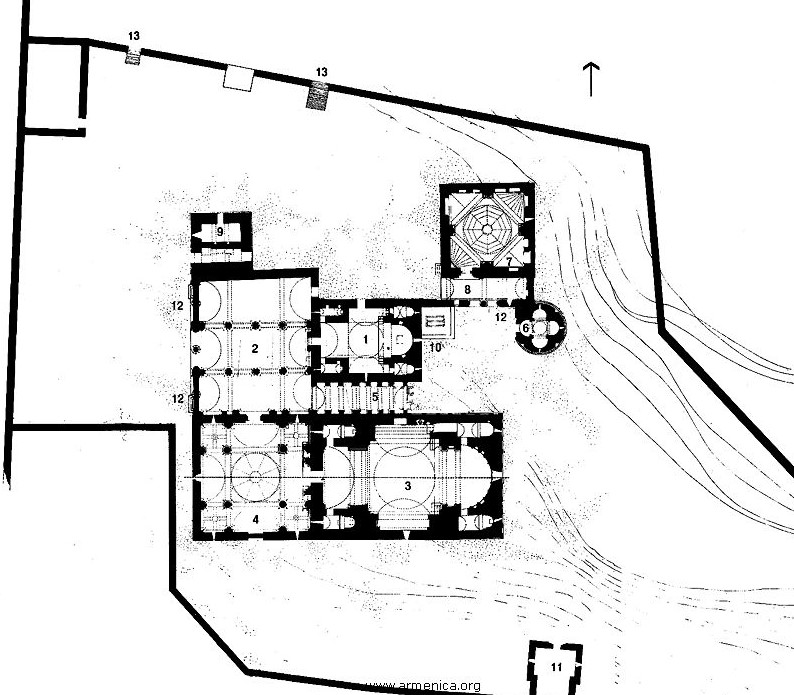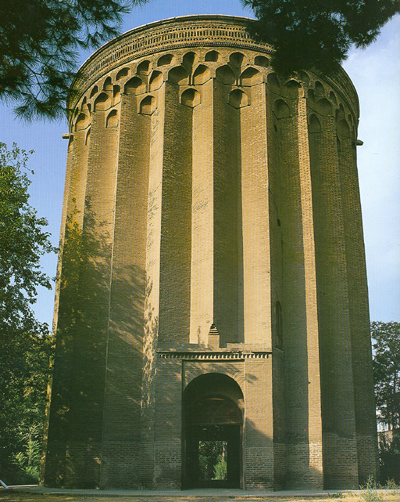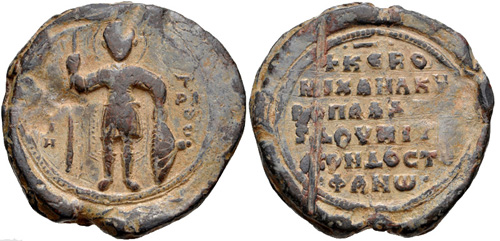|
Kingdom Of Tashir-Dzoraget
The Kingdom of Tashir-Dzoraget ( hy, Տաշիր-Ձորագետի Թագավորություն ''Tashir-Dzorageti t'agavorut'yun''), alternatively known as the Kingdom of Lori or Kiurikian Kingdom by later historians, was a medieval Armenian kingdom formed in the year 979 by the Kiurikian dynasty, a branch of the Bagratuni dynasty, as a vassal kingdom of the Bagratid Kingdom of Armenia. The first capital of the kingdom was Matsnaberd, currently part of modern-day Azerbaijan. It was located on the territories of modern-day northern Armenia, northwestern Azerbaijan and southern Georgia. The founder of the kingdom and the Kiurikian dynasty was king Kiurike I (also known as Gurgen I). In 979 King Smbat II of Armenia granted the province of Tashir to his brother Kiurike with the title of king. The branch went on to outlive the main one in Ani. It became especially strong during the reign of King David I Anhoghin who succeeded his father Kiurike and ruled between 989 and 1048. David I ... [...More Info...] [...Related Items...] OR: [Wikipedia] [Google] [Baidu] |
Kiurike I
Kiurike I (alternatively spelled Gorige, Korike or Gurgen; hy, Գուրգեն Ա Կյուրիկե) was the first king of the Kingdom of Tashir-Dzoraget. He was succeeded by his son David I Anhoghin David I Anhoghin ( hy, Դավիթ Անհողին) succeeded his father to the throne of the Kingdom of Tashir-Dzoraget. His nickname ''Anhoghin'' ("Landless") refers to a temporary loss of his lands he suffered after a defeat at the hands of the k .... References Year of birth unknown 989 deaths Kiurikian dynasty Kings of Tashir-Dzoraget {{Armenia-royal-stub ... [...More Info...] [...Related Items...] OR: [Wikipedia] [Google] [Baidu] |
Samshvilde
Samshvilde ( ka, სამშვილდე, ) is a ruined fortified city and archaeological site in Georgia, in the country's south, near the homonymous modern-day village in the Tetritsqaro Municipality, Kvemo Kartli region. The ruins of the city, mostly medieval structures, stretch for a distance of 2.5 km in length and in width in the Khrami river valley. Some of the most recognizable monuments are the Samshvilde Sioni church and a citadel erected on a rocky river promontory. Samshvilde features in the medieval Georgian annals as one of the oldest cities of ancient Kartli, dating back to the 3rd century BC. In the Middle Ages, it was an important stronghold as well as a lively commercial and industrial city. Samshvilde changed hands several times. At the end of the 10th century, it became capital of the Armenian kings of Tashir-Dzoraget and was incorporated in the Kingdom of Georgia in 1064. From the mid-13th century on, as fortunes of the medieval Georgian monarchy fa ... [...More Info...] [...Related Items...] OR: [Wikipedia] [Google] [Baidu] |
Haghpat
Haghpat ( hy, Հաղպատ) is a village in the Lori Province of Armenia, located near the city of Alaverdi and the state border with Georgia. It is notable for Haghpat Monastery, a religious complex founded in the 10th century and included in the UNESCO World Heritage List along with monasteries in nearby Sanahin. The monastery is a magnificent example of medieval Armenian architecture that has been attracting increasing numbers of tourists. Haghpat Monastery is listed among the UNESCO World Heritage List (1996). The village lies on a dissected plateau, a large flat area dissected by deep "cracks" formed by rivers, including the river Debed. The villages of Sanahin and Akner, as well as a part of Alaverdi, lie in plain view on neighbouring sections of the plateau, however a steep and long descent to and ascent from the river is required to travel to them. Gallery File:Khachkar Haghpat 01.jpg File:Armenia Haghbat.jpg File:Jahlinmarceta haghpat.jpg File:Haghpat Monastery - in ... [...More Info...] [...Related Items...] OR: [Wikipedia] [Google] [Baidu] |
Sanahin Monastery
Sanahin Monastery is an Armenian monastery founded in the 10th century in the Lori Province of Armenia, recognized as a UNESCO World Heritage Site. The name Sanahin literally translates from Armenian as 'this one is older than that one', presumably representing a claim to having an older monastery than the neighbouring Haghpat Monastery. The two villages and their monasteries are similar in many ways, and lie in plain view of each other on a dissected plateau formation, separated by a deep crack formed by a small river flowing into the Debed river. As with Haghpat, Sanahin is frequented by an increasing number of tourists, due to its recent inclusion on the itineraries of a great number of Armenian tour agencies, the beauty of its monastery complex matching that of Haghpat's. The complex belongs to the Armenian Apostolic Church with numerous khachkars (stones with elaborate engravings representing a cross) and bishop gravesites scattered throughout it. History The first church o ... [...More Info...] [...Related Items...] OR: [Wikipedia] [Google] [Baidu] |
Philip Grierson
Philip Grierson, FBA (15 November 1910 – 15 January 2006) was a British historian and numismatist, emeritus professor of numismatics at Cambridge University and a fellow of Gonville and Caius College for over seventy years. During his long and extremely prolific academic career, he built the world's foremost representative collection of medieval coins, wrote very extensively on the subject, brought it to much wider attention in the historical community and filled important curatorial and teaching posts in Cambridge, Brussels and Washington DC. Early life Grierson was born in Dublin to Philip Henry Grierson and Roberta Ellen Jane Grierson. He had two sisters, Janet Grierson and Aileen Grierson . His father was a land surveyor and member of the Irish Land Commission who, after losing his job in 1906, ran a small farm at Clondalkin, near Dublin. There he gained a reputation for financial acumen, and was appointed to the boards of a number of companies. Grierson's father also bu ... [...More Info...] [...Related Items...] OR: [Wikipedia] [Google] [Baidu] |
Mongols
The Mongols ( mn, Монголчууд, , , ; ; russian: Монголы) are an East Asian ethnic group native to Mongolia, Inner Mongolia in China and the Buryatia Republic of the Russian Federation. The Mongols are the principal member of the large family of Mongolic peoples. The Oirats in Western Mongolia as well as the Buryats and Kalmyks of Russia are classified either as distinct ethno-linguistic groups or subgroups of Mongols. The Mongols are bound together by a common heritage and ethnic identity. Their indigenous dialects are collectively known as the Mongolian language. The ancestors of the modern-day Mongols are referred to as Proto-Mongols. Definition Broadly defined, the term includes the Mongols proper (also known as the Khalkha Mongols), Buryats, Oirats, the Kalmyk people and the Southern Mongols. The latter comprises the Abaga Mongols, Abaganar, Aohans, Baarins, Chahars, Eastern Dorbets, Gorlos Mongols, Jalaids, Jaruud, Kharchins, Khishig ... [...More Info...] [...Related Items...] OR: [Wikipedia] [Google] [Baidu] |
Tavush
Tavush ( hy, Տավուշ, ) is a province of Armenia located at the northeast of Armenia, bordered by Georgia from the north and Azerbaijan from the east. Internally, Tavush borders the Gegharkunik Province from the south, Kotayk Province from the southwest, and the Lori Province from west. The capital and largest city of the province is the town of Ijevan. Etymology The name of the province is derived from ''Tavush''; a variant of the original name of ''Tuchkatak'' canton of the historic Utik province of Ancient Armenia. It first appeared during the 9th century as the name of the 9th-century Bagratid fortress near modern-day Berd. Geography Tavush has an area of 2,704 km² (9% of total area of Armenia). It occupies the northeastern part of Armenia. It is bordered by Georgia to the north and Azerbaijan to the east. Domestically, it is bordered by the Gegharkunik Province from the south, Kotayk Province from the southwest and Lori Province from west. The territory is m ... [...More Info...] [...Related Items...] OR: [Wikipedia] [Google] [Baidu] |
Kingdom Of Georgia
The Kingdom of Georgia ( ka, საქართველოს სამეფო, tr), also known as the Georgian Empire, was a medieval Eurasian monarchy that was founded in circa 1008 AD. It reached its Golden Age of political and economic strength during the reign of King David IV and Queen Tamar the Great from 11th to 13th centuries. Georgia became one of the pre-eminent nations of the Christian East and its pan-Caucasian empire and network of tributaries stretching from Eastern Europe to Anatolia and northern frontiers of Iran, while also maintaining religious possessions abroad, such as the Monastery of the Cross in Jerusalem and the Monastery of Iviron in Greece. It was the principal historical precursor of present-day Georgia. Lasting for several centuries, the kingdom fell to the Mongol invasions in the 13th century, but managed to re-assert sovereignty by the 1340s. The following decades were marked by the Black Death, as well as numerous invasions under the lea ... [...More Info...] [...Related Items...] OR: [Wikipedia] [Google] [Baidu] |
First Kingdom Of Kakheti
The Kingdom of Kakheti-Hereti ( ka, კახეთ-ჰერეთის სამეფო, tr) or just the First Kingdom of Kakheti was an early Medieval monarchy in eastern Georgia, centered at the province of Kakheti, with its capital first at Telavi. It emerged in 1014 AD, under the leadership of energetic ruler of principality of Kakheti, Kvirike III the Great that finally defeated the ruler of Hereti and crowned himself as a king of the unified realms of Kakheti and Hereti. From this time on, until 1104, the kingdom was an independent and separated state from the united Kingdom of Georgia. The kingdom included territories from riv. Ksani (western border) to Alijanchay river (eastern border) and from Didoeti (northern border) to southwards along the river of Mtkvari (southern border). Establishment of the principality Kakheti had been a part of Kingdom of Iberia, and then a part the Principate of Iberia. However, in the second half of the 8th century, Arab sources al ... [...More Info...] [...Related Items...] OR: [Wikipedia] [Google] [Baidu] |
Seljuk Empire
The Great Seljuk Empire, or the Seljuk Empire was a high medieval, culturally Turco-Persian tradition, Turko-Persian, Sunni Islam, Sunni Muslim empire, founded and ruled by the Qiniq (tribe), Qïnïq branch of Oghuz Turks. It spanned a total area of from Anatolia and the Levant in the west to the Hindu Kush in the east, and from Central Asia in the north to the Persian Gulf in the south. The Seljuk Empire was founded in 1037 by Tughril (990–1063) and his brother Chaghri Beg, Chaghri (989–1060), both of whom co-ruled over its territories; there are indications that the Seljuk leadership otherwise functioned as a triumvirate and thus included Seljuk dynasty, Musa Yabghu, the uncle of the aforementioned two. From their homelands near the Aral Sea, the Seljuks advanced first into Greater Khorasan, Khorasan and into the Iranian plateau, Iranian mainland, where they would become largely based as a Persianate society. They then moved west to conquer Baghdad, filling up the power va ... [...More Info...] [...Related Items...] OR: [Wikipedia] [Google] [Baidu] |
Seljuk Dynasty
The Seljuk dynasty, or Seljukids ( ; fa, سلجوقیان ''Saljuqian'', alternatively spelled as Seljuqs or Saljuqs), also known as Seljuk Turks, Seljuk Turkomans "The defeat in August 1071 of the Byzantine emperor Romanos Diogenes by the Turkomans at the battle of Malazgirt (Manzikert) is taken as a turning point in the history of Anatolia and the Byzantine Empire. or the Saljuqids, was an Oghuz Turkic, Sunni Muslim dynasty that gradually became Persianate and contributed to the Turco-Persian tradition in the medieval Middle East and Central Asia. The Seljuks established the Seljuk Empire (1037-1194), the Sultanate of Kermân (1041-1186) and the Sultanate of Rum (1074-1308), which at their heights stretched from Iran to Anatolia, and were the prime targets of the First Crusade. Early history The Seljuks originated from the Kinik branch of the Oghuz Turks, who in the 8th century lived on the periphery of the Muslim world, north of the Caspian Sea and Aral Sea in their Og ... [...More Info...] [...Related Items...] OR: [Wikipedia] [Google] [Baidu] |
Kouropalates
''Kouropalatēs'', Latinized as ''curopalates'' or ''curopalata'' ( el, κουροπαλάτης, from lat, cura palatii "he one incharge of the palace"). and Anglicized as curopalate, was a Byzantine court title, one of the highest from the time of Emperor Justinian I to the Komnenian period in the 12th century.. The female variant, held by the spouses of the ''kouropalatai'', was ''kouropalatissa''. History and nature of the title The title is first attested (as ''curapalati'') in the early 5th century, as an official of ''vir spectabilis'' rank under the ''castrensis palatii'', charged with the maintenance of the imperial palace (cf. Western European "majordomo"). When Emperor Justinian I () made his nephew and heir Justin II ''curopalates'' in 552, however, the office took on new significance, and became one of the most exalted dignities, ranking next to ''Caesar'' and ''nobilissimus'' and, like them, reserved initially for members of the imperial family. Unlike them, however, ... [...More Info...] [...Related Items...] OR: [Wikipedia] [Google] [Baidu] |





